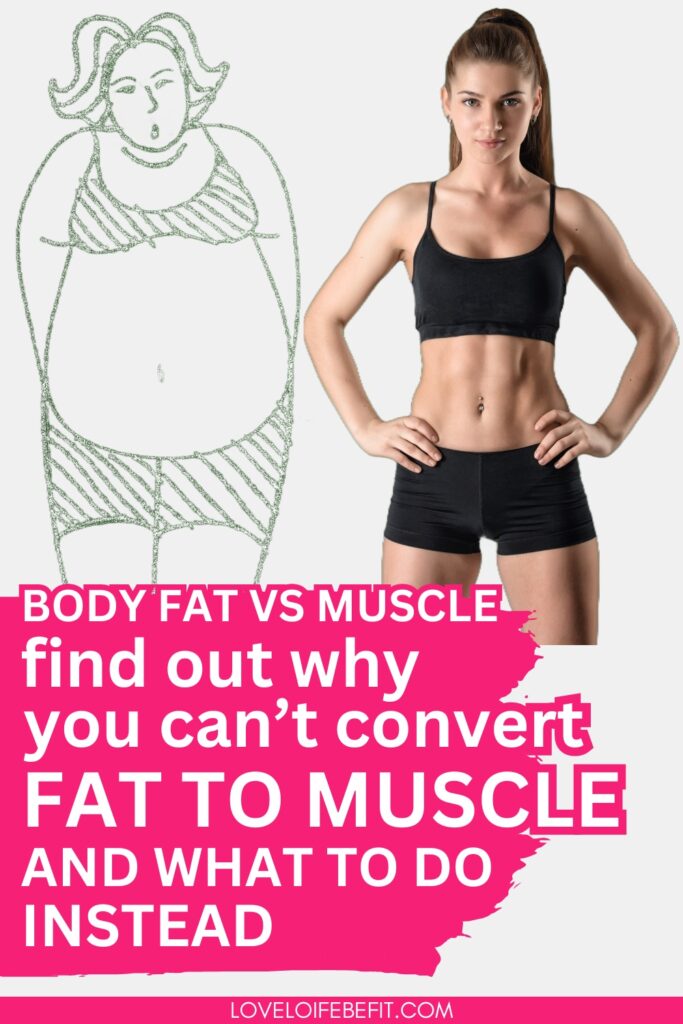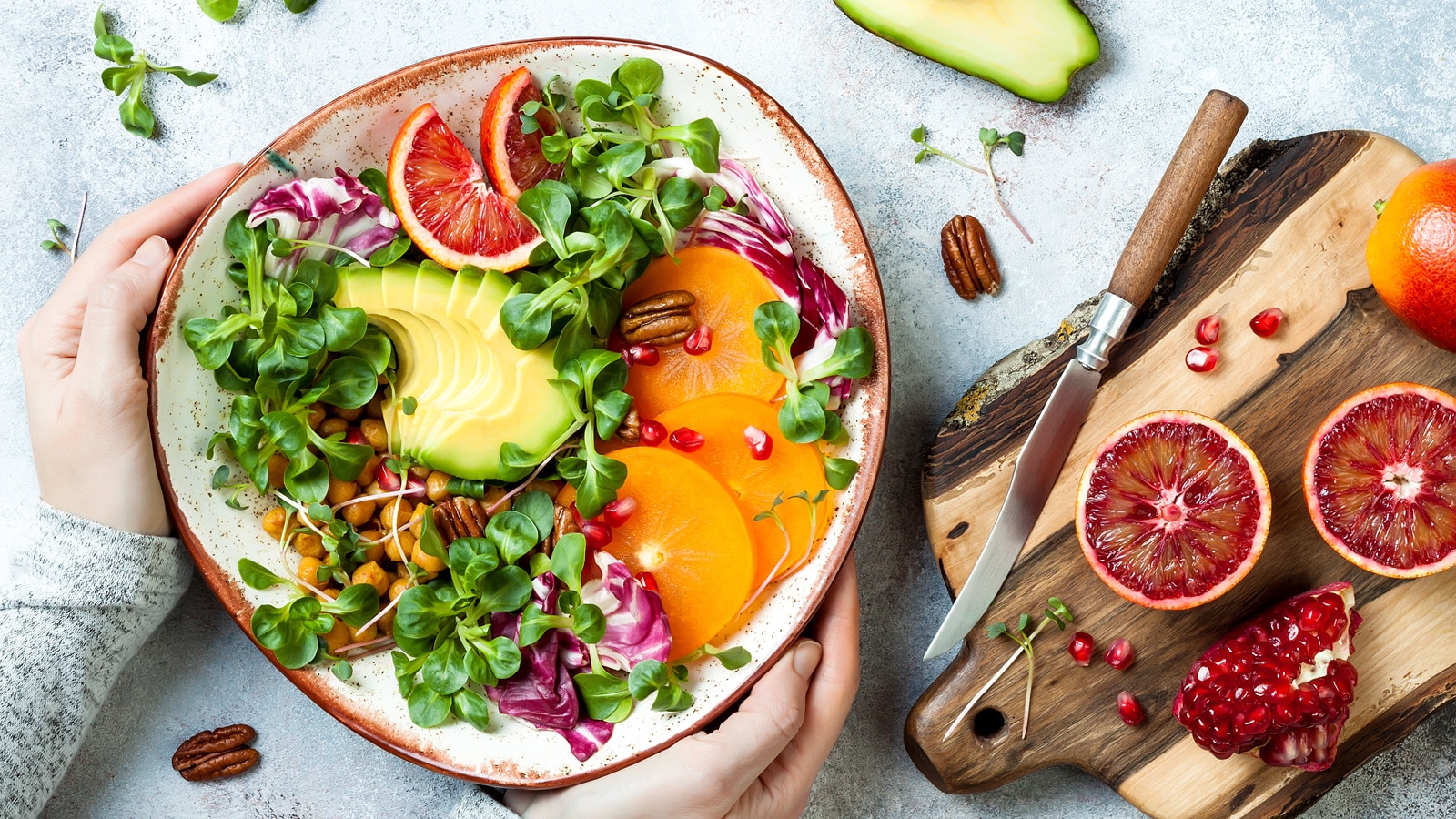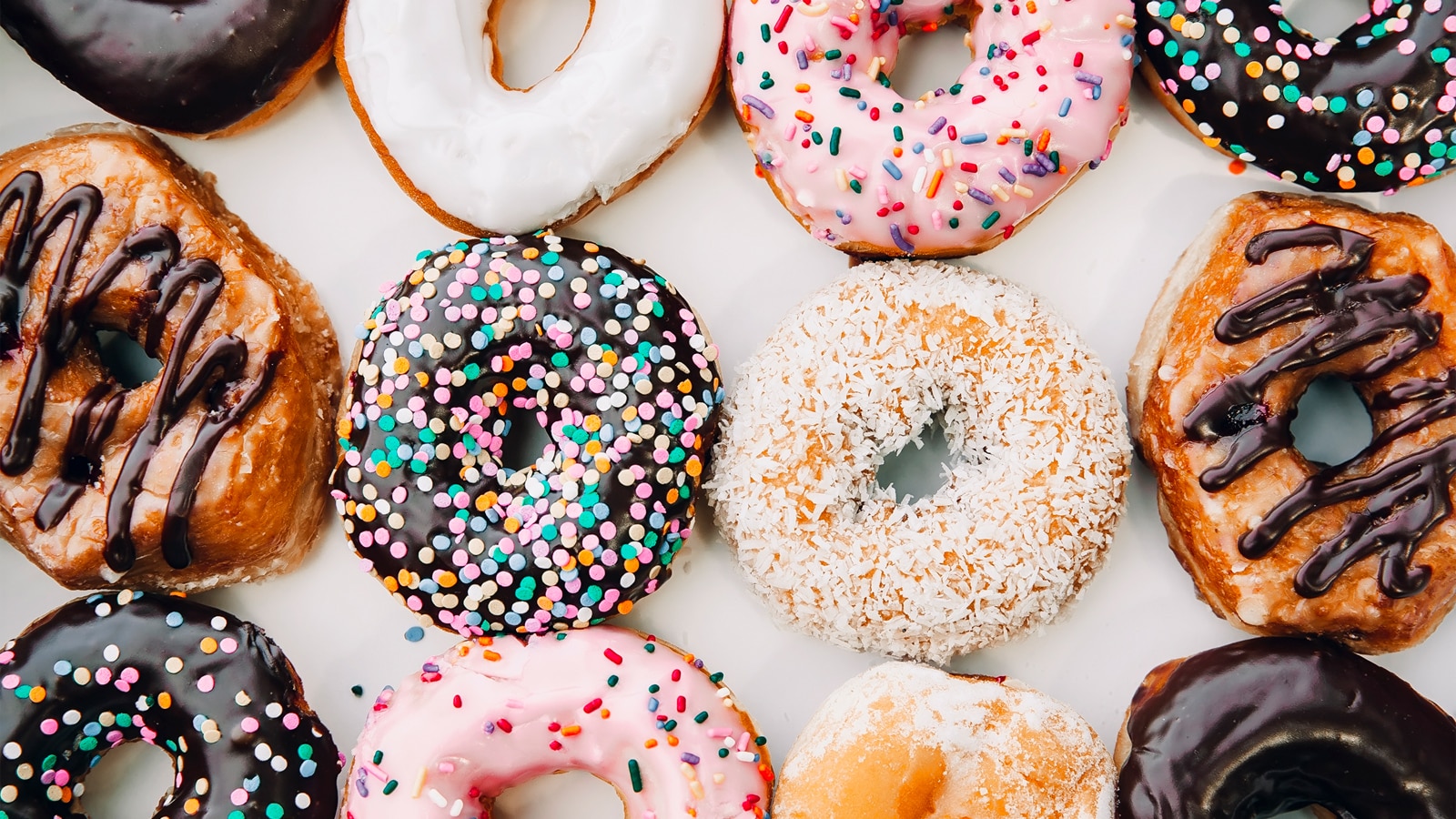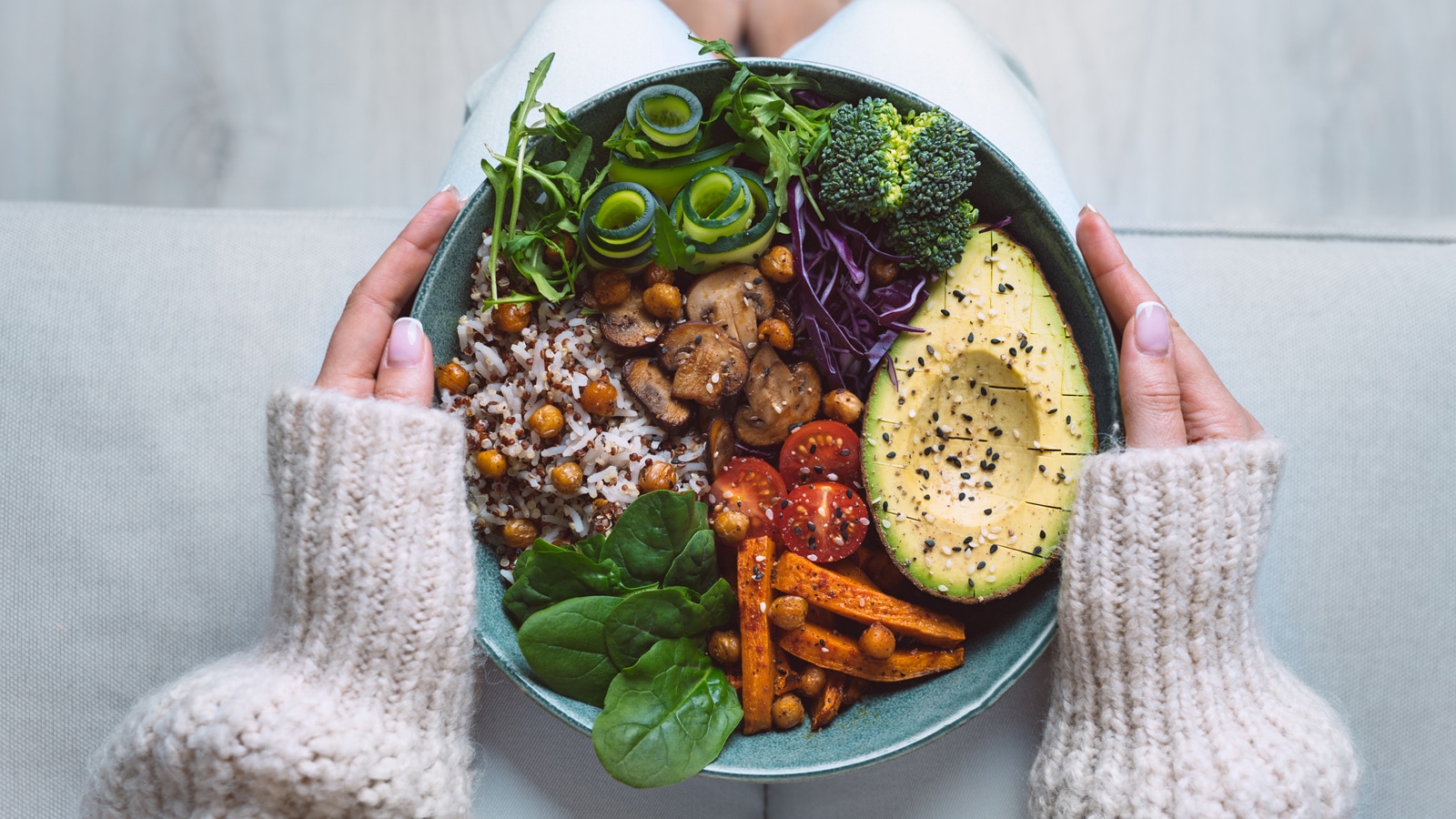Body Fat vs. Muscle: How Does It Affect Your Weight?
Let’s talk about density. I had a spell of teaching math in schools and when you talked about density pupils’ eyes glazed over. It’s really not THAT complicated but it is important for the fat vs muscle debate.
One pound of muscle weighs the same as one pound of fat.
But you knew that, didn’t you? (DIDN’T you? Remember those textbook illustrations: one pound of bricks weighing the same as one pound of feathers.)
So when people talk about pounds of muscle weighing more than fat what they really mean is muscles are denser than fat. Muscles take up less space.
Muscle and fat affect your weight and body composition in very different ways. In this blog post, we’ll take a look at the difference between body fat and muscle, how they affect your body weight, and why you can’t just convert fat to muscle mass.
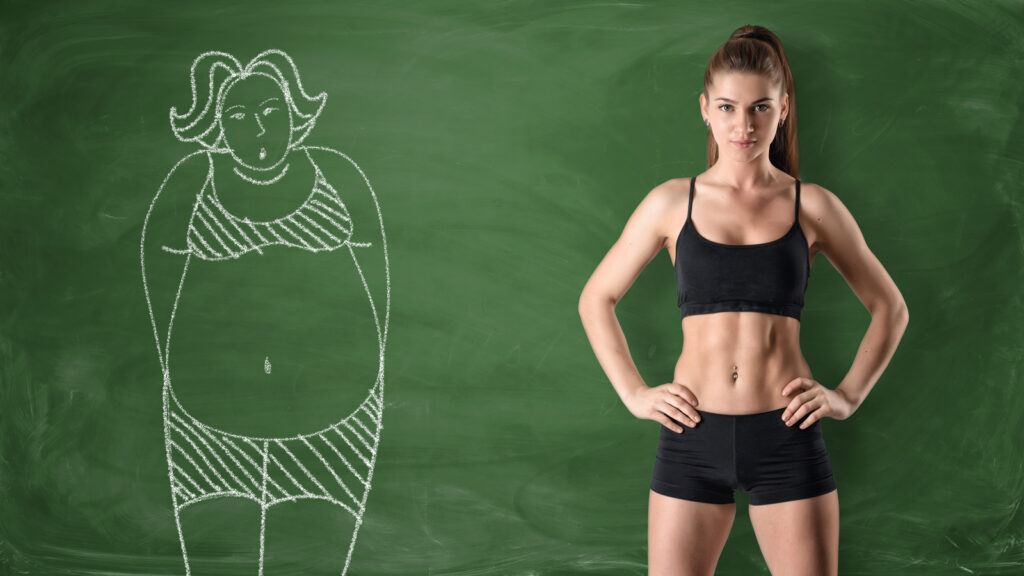
How Fat and Muscle Affect Your Weight
Okay, let’s have a reminder – what is density? Density is defined as the mass of an object divided by its volume. In other words, it’s a measure of how much stuff is packed into a given space.
Fat has a lower density than muscle because it takes up more space. So although these two guys look completely different, they could both be the same weight. One has the extra volume of body fat while the other is all lean body mass.
(Lean body mass, also called lean mass is total body weight minus body fat weight).
But there’s a big misconception that muscle is a LOT denser than fat and all you need to do is convert your fat to muscle fiber by going to the gym and you’ll end up with a “perfect” body. Marketers love pushing this idea. No dieting required. And it’s so WRONG.

Density of Muscle vs Density of Fat
On average, the density of muscle is about 1.1kg/liter while the average density of fat is about 0.9kg/liter. So 1 liter of muscle weighs 1.1kg or 2.42 pounds and 1 liter of fat weighs 0.9 kg or 1.98 pounds.
Think about this in terms of how your body looks – muscle takes up approximately 20% less space than fat. It’s a significant difference but it’s not a massive difference.
If you’re going to the gym regularly and failing to lose weight, don’t assume it’s because you’re replacing body fat with muscle weight. There could be other reasons why you’re not losing weight.
Related post: Why Your Weight Loss Is Slow (And What To Do About It)
Why You Need Fat
It’s popular to talk about fat as if it’s a demon. But it’s an essential part of your body composition. According to the American Council on Exercise, essential fat is 10 to 13% for women and 2 to 5% for men.
This is a survival level!
For most people, 20 to 24% for women and 14-17% for men is an achievable target if you want to be fit and healthy.
Health Risks of High Body Fat
Carrying excess body fat comes with a whole host of health risks including a higher risk of heart disease, high blood pressure, stroke, type 2 diabetes, certain types of cancer, sleep apnea, and infertility.
That’s why it’s important to maintain a healthy body fat percentage. Fat weight can be difficult to measure so most health professionals rely on BMI (body mass index).
What is BMI?
BMI is a measure of body fat based on height and weight. A BMI of 18-25 is considered a healthy weight and an indicator of good health.
25-30 is considered overweight, 30-35 is considered obese, and 35+ is considered morbidly obese.
It’s a very rough and ready indicator and fails to take into account your muscle-to-fat ratio. Based on BMI, you can have a dangerously low body fat percentage and STILL be considered obese.
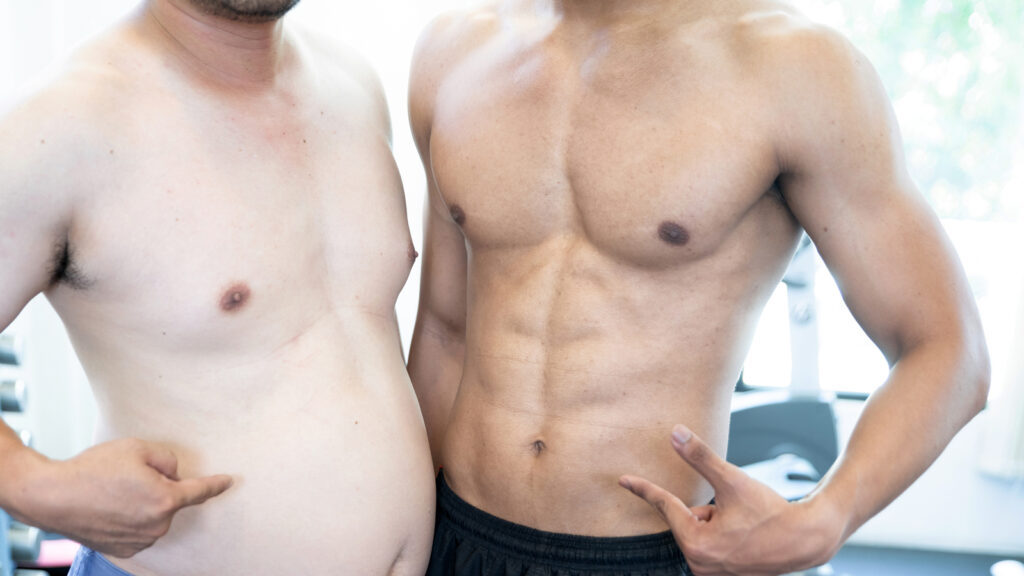
Different Types Of Fat
Before you shed fat it’s worth understanding the different types of fat found in the body.
- Essential fat
- Subcutaneous fat
- Visceral fat.
Essential fat is found in the bone marrow, brain, central nervous system, and other organs. It’s essential for survival and you can’t live without it.
Subcutaneous fat is the layer of fat beneath the skin. This type of fat serves as an energy reserve and insulation against cold temperatures.
Visceral fat is the type of fat that surrounds the organs in the abdominal cavity. It’s sometimes called “belly fat” and it’s the most dangerous type of fat. Visceral fat increases the risk of heart disease, stroke, and type-II diabetes. Fortunately, it’s the easiest fat layer to lose.
What happens if your body fat percentage is too low?
If your body fat levels are too low you’re risking fat-soluble vitamin deficiencies, increased risk of disease, and for women, fertility issues. It also affects your performance. Low body weight is associated with reduced brain function and fatigue.
Lose fat too quickly and it can also affect your metabolism with your body slipping into starvation mode and preventing weight loss – it’s a reason why diets don’t work.
Benefits Of Fat
Of course, too much fat is detrimental to everyday health but in the fat vs muscle debate, there are some benefits to those extra fat cells.
Fat insulates against cold temperatures and stores energy for later use. I’ve never worried about a few excess pounds before heading on a mountaineering expedition where I know I’m going to need a lot of reserves. Many climbers will consciously gain fat before a trip.
Different Types of Muscle
There are three types of muscles in the human body
- smooth,
- cardiac
- skeletal
Smooth muscle is found in the walls of organs such as the stomach, small intestine, blood vessels, and bladder. These muscles contract slowly and rhythmically, without conscious control. Cardiac muscle is found in the heart and contracts to pump blood around the body. Skeletal muscle is attached by tendons to bones and is responsible for all the movement in your body.
Skeletal muscles make up around 40% of your total body mass and as we age these muscles deteriorate with a loss of muscle mass often leading to mobility issues in later life.

Benefits Of Muscle
As well as being essential for movement, muscles have a number of other benefits:
- Muscles protect your joints,
- Support your internal organs,
- Help you balance and stabilize your body,
- Play a role in regulating blood sugar levels.
Of course, if you’re an athlete or exercise enthusiast, muscles are crucial for your performance in sports. Also, muscle boosts metabolism burning more calories even when you’re at rest.
Body Image
It’s unfortunate but a lot of people are influenced by the images they see on social media. Unrealistic body images of people with highly defined muscles and almost zero excess fat.
Or skinny-fat stick thin models, with no muscle definition, who are great skeletons for displaying clothes.
Often the images are fake and have been touched up to remove any blemishes or imperfections. They present an unobtainable ideal and one that’s not necessarily healthy.
Did you know bodybuilders will shed water weight before major competitions? The result is a body composition that’s unattainable in real life.
Can You Convert Fat Into Muscles?
If you’re at the start of your weight loss journey, trying to get fit and healthy, how do you go about reducing your total weight by shedding pounds of fat?
Ideally, you’d convert all that weight gain you’ve put on over the years to muscles.
Unfortunately, it doesn’t quite work that way.
Muscles and fat cells have different chemical makeups – so you can’t just convert one to the other.
Weight Loss Fat vs Muscle
The first step is losing body fat. You do this with a calorie deficit – eating fewer calories than your body needs to function every day.
Either eat less or exercise more.
The best way is to do both – just don’t get too carried away with exercise, (or you’ll end up injured), and make sure your calorie cutting is sustainable. It’s best to keep your calorie deficit to no more than 500 calories a day and aim for slow sustainable weight loss. Otherwise, you risk your metabolism slowing down as your body switches to survival mode.
Eating a balanced diet full of whole foods, protein, fruit and vegetables, and cutting out processed foods will help you to lose weight.
Most of the weight you lose will be from fat but there is a risk of breaking down muscles.
Strength training or bodyweight resistance training will help you maintain your muscle mass through this weight loss period.
How to Gain Muscle Mass
Building muscle relies on eating extra calories so it conflicts with weight loss.
New muscle cells are created through a process called muscle protein synthesis (MPS). Strength training combined with a diet high in dietary nitrogen found in most protein-rich foods helps to stimulate MPS.
If you have a lot of fat to lose, it’s better to concentrate on fat-burning exercises first and then start building muscle.
Walking for weight loss or following a Couch to 5K Plan are some of the best ways to get in shape before you start lifting weights.
Conclusion: Fat vs Muscle
Muscle is denser than fat but not as much as people think. If you’re struggling to lose weight it’s probably because you’re still eating too much or not exercising enough.
It’s best to lose weight first before trying to build muscle – gaining muscles takes extra calories so it’s hard to do when you’re trying to lose body fat.
But don’t ignore your muscle building – some strength training during your weight loss period will help to stop muscle atrophy.
